Asilus crabroniformis (hornet robberfly)
Asilus crabroniformis is commonly called the hornet robber fly as it resembles hornets due to the patterning of the abdomen, and the colour and size of the rest of the adults body.
The adults prey on grasshoppers, beetles (predominantly dung-beetles), bees, wasps and other robber flies.They generally hunt from bare ground or low lying vegetation including stumps and sticks. The adults are known to take 10-30 minutes to suck their prey dry!
Asilus crabroniformis belongs to the family Asilidae, the robber flies and is found throughout Wales and the southern part of England.
Species detail
-

Taxonomy
There are 28 species of robberfly found in Britain, a fairly low number in comparison to mainland Europe. There are 530 genera and over 7,000 species described worldwide.
-

Distribution and habitat
The hornet robber fly is found in Wales and southern England. Learn more about the places it inhabits as an adult and a larva.
-

Biology
Asilus crabroniformi larvae take around 2 years to develop in or around dung pats. After emergence the large adults fly from late June to late October.
-

Behaviour
Asilus crabroniformis is a predatory fly both as an adult and larva. Discover more about which species the hornet robberfly preys on and how it kills its prey.
-

Conservation
The hornet robber fly is categorised as Nationally Notable (Scarce) and is listed on the priority list for UK BAP.
Images
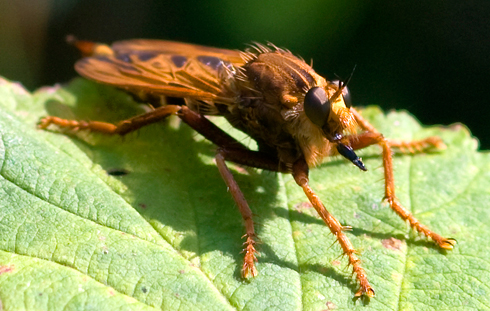
Asilus crabroniformis
© Encyclopedia of life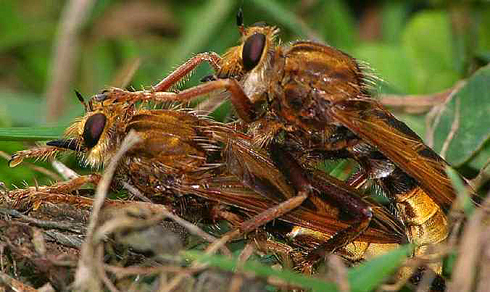
Asilus crabroniformis
© JC Bernard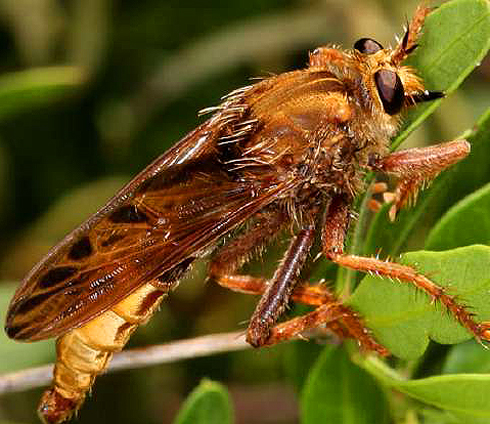
Asilus crabroniformis
© C Ollieu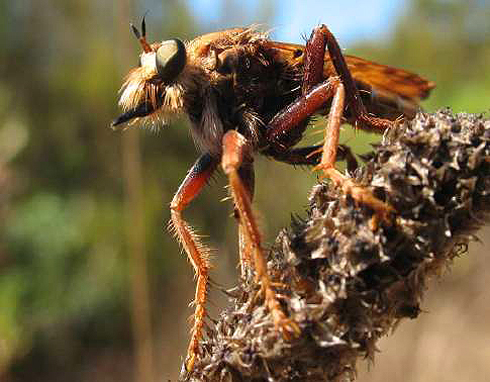
Asilus crabroniformis
© A Guibentif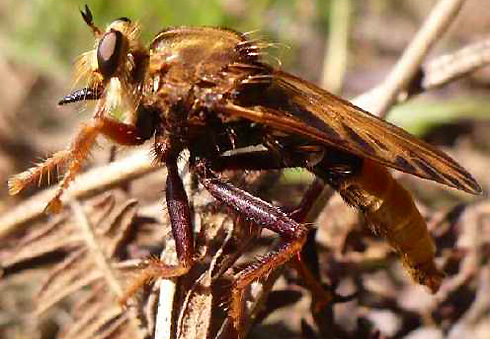
Asilus crabroniformis
© C Fortune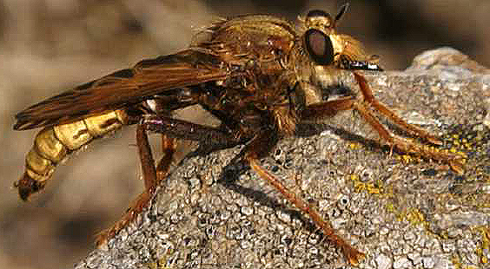
Asilus crabroniformis
© P SegardAbout the author

Dr Erica McAlister
Collections Manager for the Museum's Diptera, Siphonaptera, Arachnida and Myriapoda collections. Research focuses on Diptera, especially the Nematocera and Orthorraphous Brachycera e.g. Culicidae, Mycetophilidae and Asilidae.
Follow the Curator of Diptera's blog

What happens behind the scenes in the Museum's Life Sciences Department? Curator Erica McAlister has about 30,000 species of fly to look after, and fieldwork trips at home and abroad. Her life is never dull!
Follow the blog